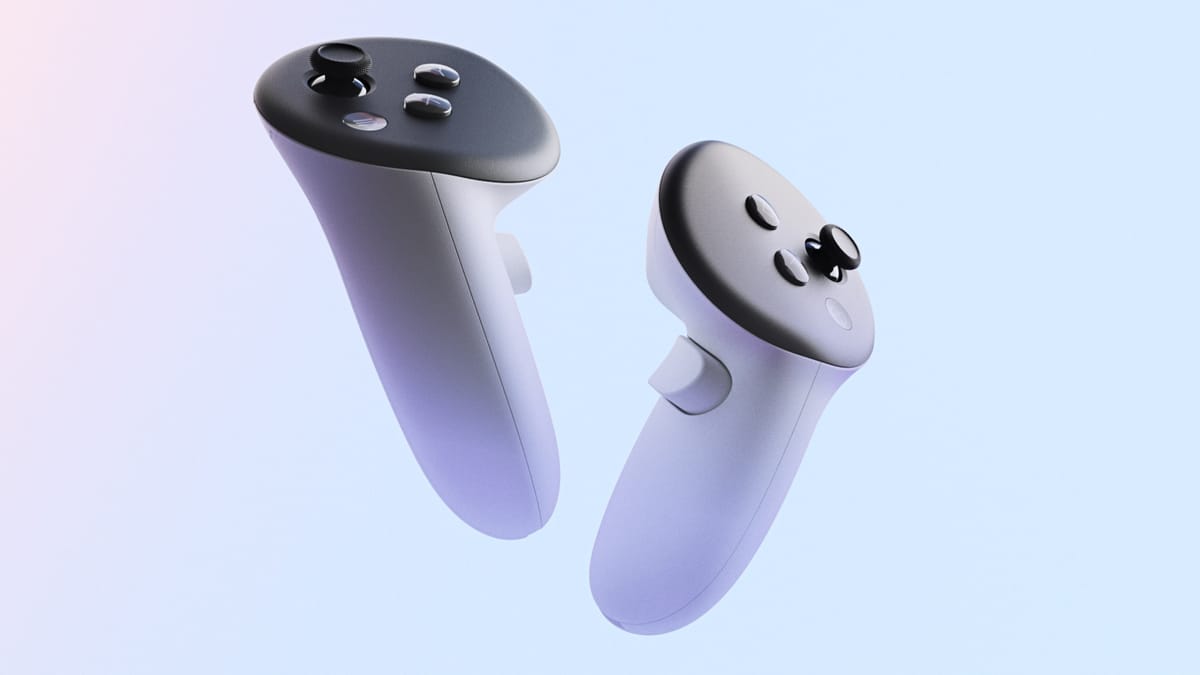UploadVR obtained our Quest 3S overview unit from Meta earlier at this time, and we have been placing it by means of its paces for a full overview.
Why Does not UploadVR Have A Quest 3S Assessment But?
UploadVR had been receiving overview models a number of days prematurely of launch underneath embargo from Oculus/Fb/Meta for 8 years now: each Rift headsets, the Contact controllers, Oculus Go, and each Quest so far – till now.
With Quest 3S, we obtained the headset at 4pm UK time at this time, simply sooner or later earlier than launch, after the overview embargo had already expired. This made it inconceivable for us to carry you a overview alongside the others you’ll have learn at this time.
We’re nonetheless not fairly certain why this occurred. UploadVR stays, by readership, the main VR-focused information publication on the planet, and far smaller retailers than us obtained a unit days in the past, so our notability and attain should not be the issue. We have additionally at all times revered each embargo from each firm we work together with, so it will probably’t be a problem of belief.
We can’t publicly speculate on what the explanation for Meta’s determination could also be, however we have requested the corporate for a proof and can carry you it if we obtain a response.
Earlier than our full overview is prepared, we needed to share a notable distinction we have observed thus far between the 2 headsets that wasn’t obvious throughout controlled hands-on sessions in well-lit environments: whereas Quest 3S is a less expensive headset with inferior lenses and show, it really options superior low-light head and hand monitoring in comparison with Quest 3.
I began by testing in whole darkness, discovering that Quest 3 and Quest 2 have been unable to trace both my head or fingers in any respect. On each headsets, a message appeared telling me monitoring was unable to initialize, providing to disable monitoring. The brand new Quest 3S, then again, continues to trace each my head and fingers so long as I am close to a wall or different geometry, although with some minor jitter.
Cubism in whole darkness on Quest 3S. The background right here is passthrough, not VR.
In low gentle, fairly than whole darkness, the distinction is extra delicate however nonetheless important; the hand monitoring high quality is noticeably superior. The form of situation folks typically play in within the evenings. Some folks could use their headset in a big room with a small gentle on within the nook, whereas others may depend on the moonlight from a window.
In these circumstances, hand monitoring initializes quicker on Quest 3S, handles quick motions higher with out dropping monitor, and produces false constructive frames (your hand, however on the improper angle or with improper finger positions) far much less typically.
Meta Reveals How Quest 3’s Controllers Are Tracked
Meta’s CTO explained how Quest 3’s Touch Plus controllers track, and Beat Saber’s co-founder gave his take.

Due to how it works on Quest 3 and Quest 3S, this additionally has a delicate impact on controller monitoring. Quest 3S makes use of the very same Contact Plus controllers as Quest 3, which have a constellation of infrared LEDs underneath their plastic which pulse in sync with the publicity of the headset’s monitoring cameras. This facet of controller monitoring works even in whole darkness. However in contrast to with Quest 2, each Quest 3 and Quest 3S additionally constantly run hand monitoring, and when the infrared LEDs are occluded, they briefly infer the controller positions out of your hand positions. Due to this, within the uncommon case of being in low gentle with the IR LEDs occluded, Quest 3S really has higher controller monitoring too. However once more, that is a uncommon case.
The How & Why: IR Illuminators
The rationale why Quest 3S has higher low-light monitoring than all earlier Quest headsets, and why its monitoring even works at nighttime, is identical purpose why we knew to check for it: it has infrared illuminators on the entrance.

There are two IR illuminators on Quest 3S, positioned alongside the passthrough cameras and monitoring cameras on the entrance of the headset. They act as IR floodlights, serving to the monitoring cameras, which see infrared, get a brilliant view of your fingers and different close by objects.
You’ll be able to even see Quest 3S’s infrared illuminators in motion with your personal eyes, showing as two pink glowing dots.
It isn’t a way Meta invented by any means. Leap Movement (now Ultraleap) has been utilizing IR illuminators for VR hand monitoring for ten years now, and Apple Vision Pro has two IR illuminators on the entrance too.

The costlier Quest 3 would not have infrared illuminators. It does have an infrared depth projector (generally known as a structured gentle scanner), in its heart bar. However this solely seems for use throughout combined actuality scene mesh scanning, to tell apart the form of spartan room geometry with not a lot texture. It would not seem to activate in low gentle – or if it does, it is clearly not as brilliant or efficient because the easier IR illuminators in Quest 3S.
However should you personal a Quest 3, do not fret. You’ll be able to add your personal external IR illuminators to your room to enhance low-light monitoring on Quest 3, Quest 2, or every other headset that makes use of inside-out laptop imaginative and prescient monitoring, as some VR fans have been doing for years now.
2023 footage of Quest 3 depth projector, from reddit person nickburyak.
We’ll have extra particulars in regards to the delicate variations between Quest 3S, Quest 3, and Quest 2 in our full Quest 3S overview, together with some surprises. As talked about above, we obtained our unit rather a lot later than different retailers, so we’ll must spend not less than a number of extra days with Quest 3S earlier than we can provide you a definitive verdict.
Source link
#Quest #LowLight #Hand #Monitoring #Quest
Unlock the potential of cutting-edge AI options with our complete choices. As a number one supplier within the AI panorama, we harness the facility of synthetic intelligence to revolutionize industries. From machine studying and knowledge analytics to pure language processing and laptop imaginative and prescient, our AI options are designed to reinforce effectivity and drive innovation. Discover the limitless potentialities of AI-driven insights and automation that propel your online business ahead. With a dedication to staying on the forefront of the quickly evolving AI market, we ship tailor-made options that meet your particular wants. Be part of us on the forefront of technological development, and let AI redefine the way in which you use and achieve a aggressive panorama. Embrace the longer term with AI excellence, the place potentialities are limitless, and competitors is surpassed.










